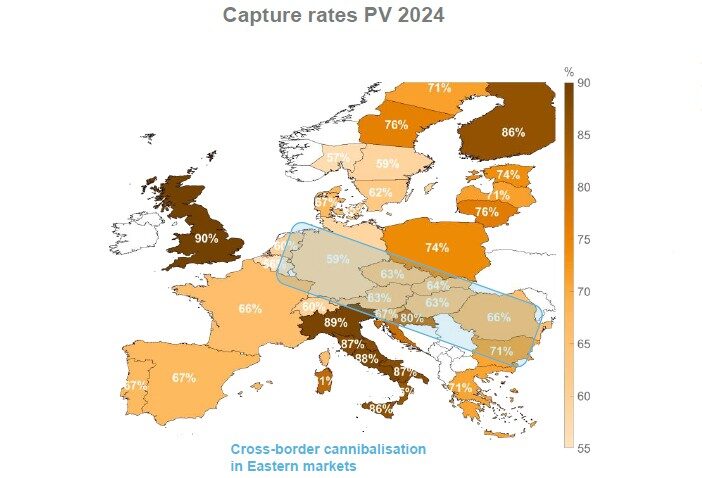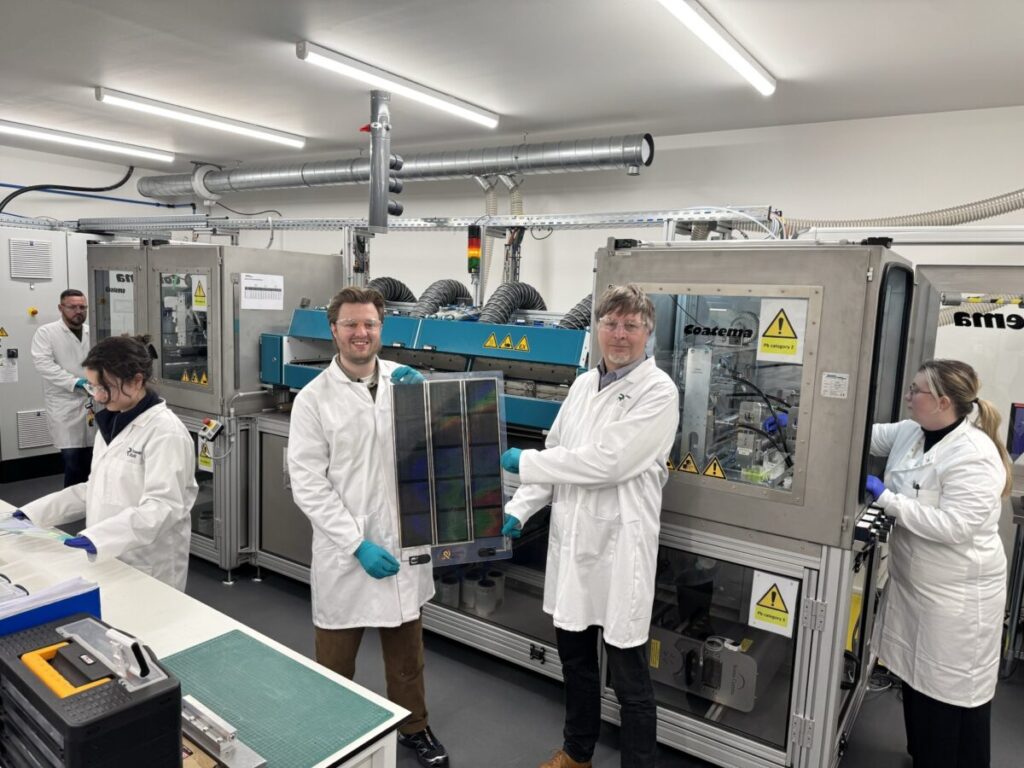Researchers from the UK’s University of Sheffield and Power Roll, a Perovskite Solar PV technology company, have achieved 12.8% power conversion efficiency in indium-free devices based on a new back contact process. A final-DIE coating process was demonstrated, compatible with roll-to-roll production.
A British team used Slot-Die-Coating to create indium-free perovskiet-zonnem module devices with a power conversion efficiency up to 12.8%, based on new technology from the British PV manufacturer, Power Roll.
“Since our previous publication in 2019 we have taken considerable steps to improve the performance of these modules,” said Nathan Hill, title Power Roll, said PV -Magazinereferring to one Energy Environmental Scientific Paper This described 2.63%-efficient serially connected perovskiet PV devices based on sixteen 1.6 μm wide V-shaped micro-grooves.
Power Roll has a new contact technique that covered perovskiet material on a flexible, lightweight pet substrate, which is relief with small channels or micro grooves, with a width of less than 2 urns.
“We have developed the technology with more than 300 grooves that are connected in series, which demonstrates the efficiency of electricity conversion of more than 12%. As far as we know, this is the highest efficiency that is demonstrated for this type of architecture in a per -PV device, “said Hill.
Indeed, according to “Back contact perovskiet solar cell modules manufactured via roll-to-roll slot-die-coating: scaling up to production“Published in ACS Applied Energy MaterialsThis time the devices had 1.5 urn width U-shaped grooves, and 362 of them were connected serially. Their efficiency was 12.8% after 7 minutes of testing.
The opposite walls of the channel are selectively coated with N and P-Type electron or hole-selective contacts. These grooves are in turn connected in a series to make micro modules or cascades.
In the last study at the University of Sheffield, the team used a UV-shifting acrylic, an N-type contact made of a multi-layered titanium/tin (IV) oxide buckminsterfullerene, while the p-type contact was based on nickel/nickel (II) oxide.
The Perovskiet was Mapbi3, where Ma refers to Methylammonium, CH3NH3+, the team noticed. It was dropped off by Slot-Die-Coating.
The coated roll was cut into small parts of approximately 1.5 cm x 1.5 cm. “Each cut part usually contained around 20 cascades, where each cascade comprises 362 serially connected grooves,” the researchers said.
To investigate the fundamental mechanisms, according to Hill, a “new perspective” was required for characterization. In addition to the use of tools such as scanning electron microscopy (SEM) UV-visible spectroscopy, wide-angle X-ray spread, the Nanofocus Röntgenfluorescence team carried out at Diamond Light Source, a synchrotron facility established in the VK. It also used new photo flow instrumentation in the National Physical Laboratory.
In addition to the aforementioned research groups, scientists from Swansea University also participated.
The devices were tested under 1 sun using a calibrated AAA sun simulator. The team discovered that when the solar simulator was placed under the probe station with the light projected, a photo flow could be generated whether the device was illuminated from above or through the substrate. Lighting of the underlying resulted in higher registered efficiency. “This indicates that Groove devices can be considered a bifacial technology,” said it.
The team emphasized how his approach ‘scarce elements’ such as Indium avoids, making it a cheap solution. “In addition, all coating processes investigated here were carried out using roll-to-roll processing techniques. Our technology is therefore fully scalable and is consistent with high-throughput, cheap production. “
“Although this article focuses on small sections to explore the fundamental functions of the Power Roll architecture, we continue to develop and demonstrate large units, in the order of 10 cm x 10 cm, on our site in the northeast of the UK,” Hill commented on the following steps. “These units contain more than 55,000 grooves and we are working on expanding this technology to even larger modules.”
This content is protected by copyright and may not be reused. If you want to work with us and reuse part of our content, please contact: editors@pv-magazine.com.
Popular content


